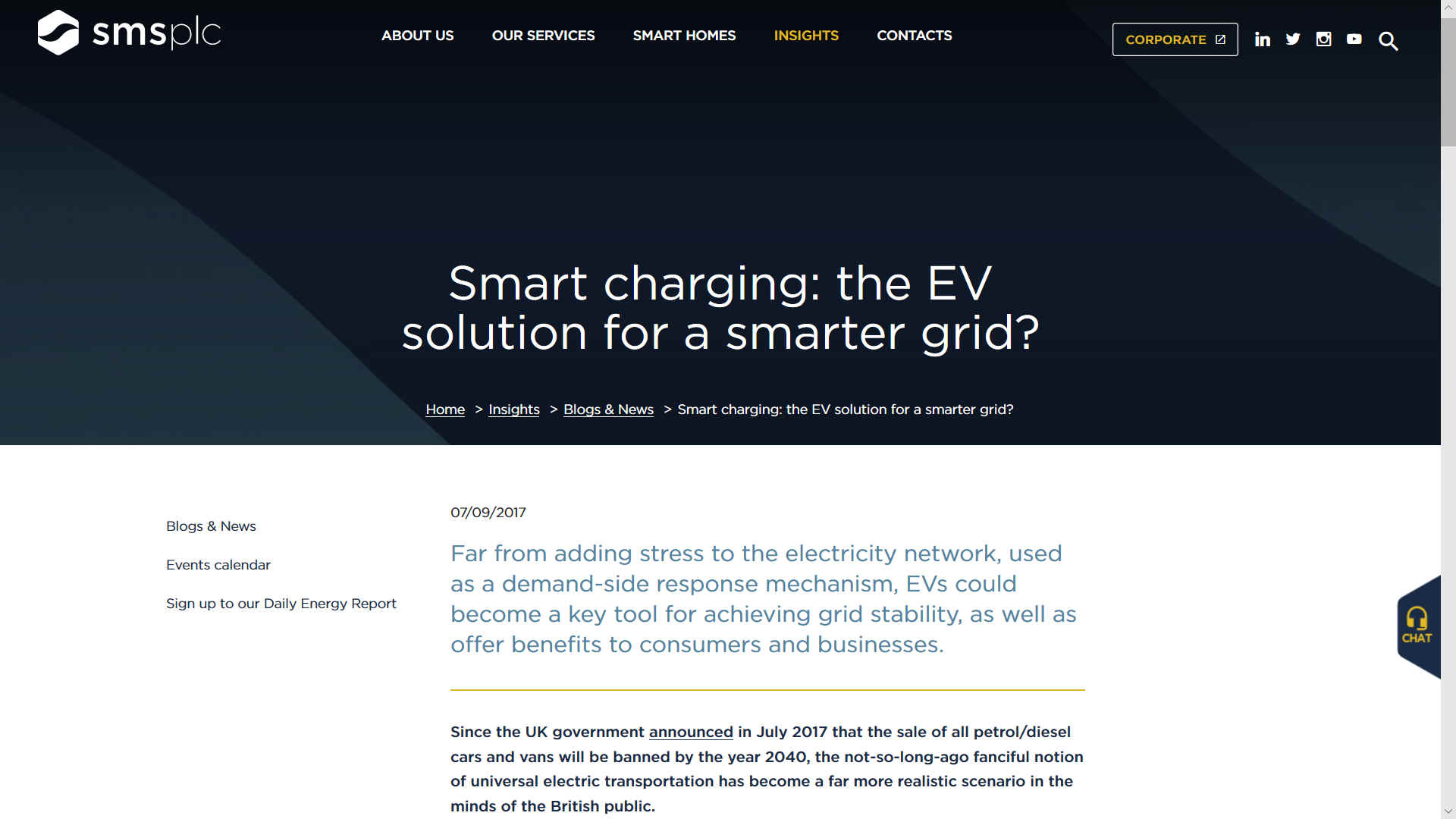|
SSE - SCOTTISH & SOUTHERN
Please use our A-Z INDEX to navigate this site where page links may lead to other sites
|
|
ABOUT SSE
According
to their website, SSE has set four fundamental goals for 2030 which put sustainability at the heart of its business.
These four goals are:
GO AHEAD LONDON
SSE Enterprise is helping thousands of London commuters travel by electric bus after installing hundreds of charging points across the capital
SSE Enterprise’s work included Go-Ahead London’s ground-breaking Waterloo Garage development, which became the first, and currently only, all-electric bus garage in the country, complete with 43 charging points in 2016.
EV’S POTENTIAL IMPACT ON THE GRID
With various studies having found that EV owners currently tend to charge their cars at the end of their working day – coinciding with when energy demand is already at its peak – the major question being posed is this: how will the system be able to cope if charging habits remain the same when EVs are in much wider use?
To put the potential demand increase into some perspective, it is estimated the draw on the grid for each single EV is equivalent to that of an entire house. Thus, hypothetically speaking, if a network feeder line had 2,000 homes on it, and 400 of those households decided to charge their EVs at the same time in the early evening, then peak demand would rise by a massive 20 percent.
It is highly likely in this case that demand would far outstrip supply, resulting in such system chaos as transformer overloads, feeder congestion, and undue circuit faults. The consequences of this would be widespread power outages, bringing catastrophic disruption to everyday life.
SMART CHARGING FOR A SMARTER GRID
Demand-side response
Therefore, the utilities industry and energy customers alike are left with a huge incentive to work within existing grid resources in order to maximise efficiency and cut down costs.
This is where EVs, if utilised as a demand-side response mechanism, could turn a problem into an opportunity.
Demand-side response, or DSR, relates to how consumers can use (or be incentivised to use) energy more intelligently in order to lower or shift electricity demand at peak times. As the National Grid puts it, DSR provides an important tool to “ensure a secure, sustainable and affordable electricity system…helping soften peaks in demand and fill in the troughs.”
In this context, far from adding to stress on the grid, EVs can actually become a key tool for grid stability, allowing electricity distributors to manage peak load and maintain reliability of supply.
It would mainly be used to reduce peaks in demand (i.e. when everybody gets home from work and plugs in their electric vehicle), although could also be used to provide high frequency response (an increase in demand in response to a rise in system frequency).
As an incentive, utility companies can offer EV owners monetary and/or non-monetary benefits in exchange for enrolment in a programme that permits controlled charging at the times when curtailment capacity is needed for the grid.
In the UK, Scottish and Southern Electricity Networks has already trialled DSR in this area with “breakthrough” success, while Electric Nation – a Western Power Distribution project – announced in March 2017 that it is to undertake the largest smart charging trial of its kind seen so far.
Preliminary results for this trial, presented by Electric Nation in early September 2017, back up the concept of smart charging as a “key solution to the impact of increasing numbers of EVs on the electricity network”.
Operating under a V2G system, EVs have the potential to become an extremely flexible asset – as well as providing transportation, they can undertake smart charging, thereby reducing demand as required, and can also export power back to the system.
As things stand, V2G has been tested in a small number of pilots; however a number of technical and regulatory issues need to be overcome before it can be widely and effectively used.
In significant news for the technology, the UK Department for Business, Energy & Industrial Strategy (in collaboration with the Office for Low Emission Vehicles and Innovate UK) announced in July 2017 that it is making £20 million available to businesses who want to help develop V2G projects around the country.
Duke Energy Corporation, DUK, N. Carolina, USA Dominion Energy Inc., Richmond, Virginia Exelon Corporation EXC, Chicago, USA KEPCO Korean Electric Power Corporation National Electric Grid & Central Electricity Authority (India) National Energy Board (Canada) National Grid plc (formerly Central Electricity Generating Board UK) Next
Era Energy Inc. Florida, USA Southern Company, Atlanta, Alabama, Georgia, Mississippi, USA State Grid Corporation of China TEPCO Tokyo Electric Power Company
CONTACTS
SSE Utility Solutions Ltd No.1 Forbury Place 43 Forbury Road Reading, Berkshire RG1 3JH, United Kingdom
LINKS & REFERENCE
http://www.electricnation.org.uk/2019/07/17/electric-nation-smart-charged-conference-review/ https://www.sms-plc.com/insights/blogs-news/smart-charging-the-ev-solution-for-a-smarter-grid/ https://sse.com/sustainability/our-2030-goals/ https://www.ssen.co.uk/Home/
Scottish and Southern Electricity Networks is a trading name of: Scottish and Southern Energy Power Distribution Limited Registered in Scotland No. SC213459; Scottish Hydro Electric Transmission plc Registered in Scotland No. SC213461; Scottish Hydro Electric Power Distribution plc Registered in Scotland No. SC213460; (all having their Registered Offices at Inveralmond House 200 Dunkeld Road Perth PH1 3AQ); and Southern Electric Power Distribution plc Registered in England & Wales No. 04094290 having their Registered Office at No.1 Forbury Place, 43 Forbury Road, Reading, RG1 3JH which are members of the SSE Group www.ssen.co.uk
Please use our A-Z INDEX to navigate this site
|
|
|
This website is provided on a free basis as a public information service. copyright © Climate Change Trust 2021. Solar Studios, BN271RF, United Kingdom.
|
